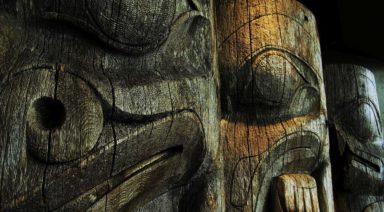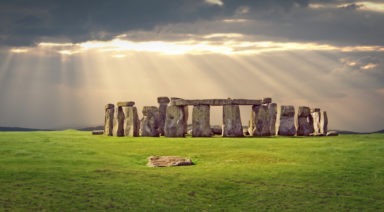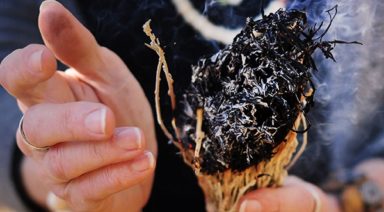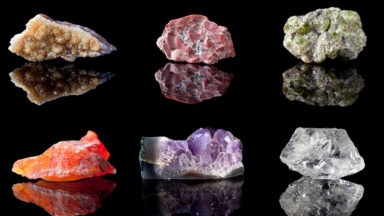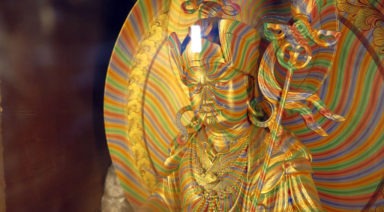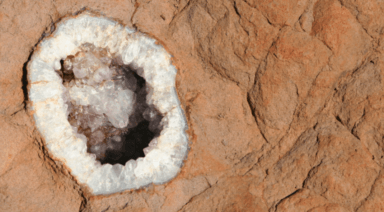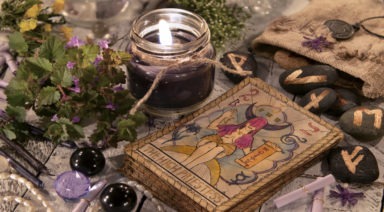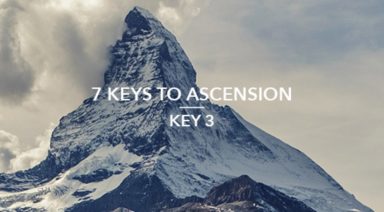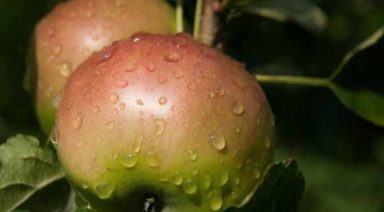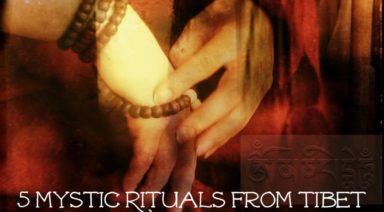Shamanism: What is a Shaman & How to Become One

I’m lucky I suppose: from a very early age, I knew I was a shaman. By six, I was reading Edgar Cayce. By eight, I’d consumed You are Psychic. By nine, I’d studied the Aborigines and Egyptians, and had my first past-life regression at fourteen. While the end goal was clear, more elusive was the path. How does one become a shaman?
No box existed on career assessments, and good luck finding a mentor in suburban Houston.
Most of my impassioned inquiries to adults only resulted in blank stares.
In our media-centric culture, we’re taught to dismiss – even mock – things that are unexplained. But what happens to those of us who feel this terrain is our destiny? To explore the unexplained, master the freaky and conquer the unknown? Sign me up!
What I know now is that it’s the shaman who masters these elusive spaces; that which is unseen is the most frequent companion of the shaman.
Shamans are those who work with the invisible realms to bring healing, peace and wholeness to the living world.
In every fiber of my being, I heard the call, knew the words, felt the pull home, but didn’t have anyone to conveniently pinpoint me on where to start.
Hearing the Call
Most shamans are not seeking this path, they’re called to it. The summons can come in any number of ways. Among the most frequent is a near death experience to illuminate her destiny. For the Nahuals of Mexico, being struck by lightning is a telltale marker of a shaman.
Dreams, past-life memories or a strong lineage of family healers may also be clear directives.
Each of these invitations from Spirit identifies the soul as one who possesses the unique gifts and strengths to become a shaman.
However, there’s nothing glamorous about this occupation. In fact, many people deny the calling until it becomes destructive to resist. The life of a shaman is one of great sacrifice, often being at the beck and call of Spirit. Much like a doctor or policeman, there are no days off – people are in need anytime, anywhere. Granted, the rewards are abundant, but nothing resembling a normal life should be expected.
What is a Shaman?
Even with my destiny’s certainty, less clear was what the heck a shaman was. I was naturally psychic, highly empathic, and yet none of these traits identified with shamans in traditional cultures.
Witch doctor, medicine (wo)man, magician, dream walker, even sorcerer, have all been used to define the shaman, yet none really capture the complexity of the role. Shamans walk between worlds to retrieve medicine, wisdom and guidance which will benefit their community. By forging working relationships with plants, Spirits, and ancestors, remedies are offered to bring relief to the living.
It’s the shaman’s duty to be in service to community and to learn to walk the unseen planes, where most ailments begin. Great dedication, commitment and creativity are required to be successful, as each patient, Spirit and plant offers its own unique teachings and challenges.
I’ve never met an anxious shaman; most exude a calm confidence that’s unshakable. They’ve conquered their demons, faced death many times and typically found worldly woes paltry in comparison. Here are a few traits common of the shaman, which may help clarify whether you’re hearing the call:
- You’ve been drawn to the unexplained
- You’ve had a near death or spontaneous out-of-body experience
- You’ve been present for many deaths/births
- You’re always the one people confide in
- You’re an empath–you feel the pain, emotions, and joy of others
- You feel deeply comforted by nature
- You have past-life memories of being a healer/seer
- You like to solve things, finding creative solutions others may miss
- You see spirits, talk to plants, or can control your dreams
How to Become a Shaman
For some fortunate native souls, parents and grandparents can often nurture the young apprentice. In the U.S., however, most inquiries are dismissed, as our culture has become heinously disconnected from its spiritual roots.
In the sixth grade, I was reading Whitley Streiber’s Communion, a forerunner to the present UFO and disclosure movements. Though we were encouraged to read what excited us, I was sent home with a harsh note from the teacher, asking that I read something more suitable. I can see now it was fear with which I was met, but to the tender heart of an enthusiastic child, such reactions can inflict permanent suppression of one’s truth. Our culture seeks to squash anything unfamiliar, and in the process, many paths are trampled which could’ve led to the ultimate destiny of the soul.
For those of us severed from our ancestral practices and shamanic rituals and traditions, we must find our own way back to previously concealed paths.
Find a Teacher
Seeking out a teacher is by far the most direct way to become a shaman. Finding the right teacher can prove to be a bit more challenging. One does not become a shaman in a weekend workshop, nor through explorations in plant medicines. Rather, the path is arduous and ancient. Heroic efforts demand you prove your dedication. Historically, shaman’s apprentices are tested for their tenacity and dedication over prolonged periods of time.
My mentor, for example, spent 13 years on pilgrimage to receive the initiations from Spirit and the land, and was finally found worthy to hold the title of Markakame (Huichol title for “shaman”). This is not a path for the faint of heart nor those seeking glory. Being a shaman is a path of sincere devotion, requiring full commitment and many divergences from the status quo.
Traveling to remote landscapes to learn in indigenous settings is the most frequent course of study. It ensures proper guidance, protection and initiations, which hone innate abilities.
You may find reputable teachers online, through referrals or even in your dreams. Following your own intuition to find the teacher who matches your sincerity and is willing to have you as an apprentice is the most exalted path. Discernment is necessary, as not all shamans hold the same integrity.
Real teachers hold power. They share their wisdom willingly with no jealousy or hesitation. As Matt Kahn offers, “masters inspire other masters.” They do not compete, nor do they hold you back. To find this caliber of teacher is the greatest effort required on your path to becoming a shaman.
A devotion to sincere and authentic teachings will require sacrifices. You may have to travel, you may have to pay money in exchange for their time and energy, and you may have to be in conditions less comfortable than your home. What is undeniable is the payoff you’ll receive from your efforts of calling and finding your teacher. You’ll gain exactly the lessons you need to further your path of becoming a shaman.
Ignite the Memories
My path wasn’t quite as direct.
My time was in deep and intimate connection with my Spirit Allies–I spent more time remembering rather than learning, receiving divine guidance from the other side. I was taught to become a shaman through my journeys. Shamanic journeying is arguably the number one tool of shamans. It’s a form of trance, which allows the shaman to travel between dimensions to retrieve knowledge.
Over the course of many years I was shown past lives, initiated by Ascended Masters and taught by my Spirit Guides and Power Animals. Even today, I rely more heavily on their direction than my own training. The teachings never stop and it’s in this combined effort of Spirit/Shaman/Client that the best healings are shared.
Sickness, near death experiences and dreams are also common places of teaching. In these spaces between life and death, the Guides can connect, share and inspire the actions which illuminate memories.
One teacher stressed that a master teacher in this physical world was absolutely necessary to one’s path. In my youth I questioned this but now recognize its sapience. Spirits don’t know the human world–they don’t heed our morals, don’t understand humor and certainly aren’t hip on our concept of time! To become a shaman, you need someone skilled at living in our human reality to guide you safely through the other dimensions. Thus is the true mastery of the shaman: one who can walk through darkness to restore the light.
A Shaman’s Mastery
A shaman is a fierce guardian of the physical world and must have personal mastery in certain areas. The shaman’s heart must be pure and clear with a great love for humanity and for the Earth. The gifts that flow through us are not ours; they are bestowed by Spirit and must be treated with great reverence. Dishonesty, ill intent and harmful behaviors will be swiftly balanced by the fates. One can be stripped of their skills and title completely.
These are spaces which require courage and faith to traverse. Here are the lessons of mastery one must attain to become a shaman:
Respect of the Earth
An intimate space of honor and connection between the shaman and the Earth must exist for any teachings to be granted.
Ceremony
Honoring the rites, spaces and actions of the ancestors is paramount and must be respected.
Shamanic Journey
We all travel while sleeping, but it’s shaman who awakens within the dream to bring back the knowledge to heal her people.
Relationship with Spirit Allies
In feeding alliances with plants, ancestors, animals, Gods and Goddesses, we are able to receive the divine blessings to assist those who seek us.
Commitment to Self
Seeking out the places of doubt and fear, being honest and in integrity, the shaman must balance humility and power to keep permission to do this work.
A Shaman’s Toolbox
While mastery of the invisible realms is the truest skill for any shaman, there are also tools in this physical world which aid us in our ceremonies.
Journey
The method through which we enter other dimensions.
Drums and Rattles
The tools to induce the trance state to take the journey.
Feathers
Feathers are considered a great gift granted to us for our commitment and respect of the animal realms.
Crystals
Blessings from the Earth which can amplify healing.
Plant Allies
The ingestion of plant materials (like Ayahuasca, mushrooms, or Wachuma) to aid in the merging of the worlds; not used by all shamans but a beneficial ally.
Song
Relationship with Spirit may be rewarded with a Icaro, a sacred song which the plant offers for healing.
Gongs and Singing Bowls
Vibrational frequencies can alleviate pain, open chakras and activate deeper spiritual states.
A Way of Life
Being a shaman is a way of life. It’s a path of devotion, and isn’t for the weak or faint of heart. It takes great courage to walk in places and offer wisdom that many in our society don’t acknowledge.
A friend once told me that in her job, she was respected but not admired. I laughed, for in my role as shaman, I believe I’m admired but not always respected by society.
It takes a fearless heart to go against the flow. And this is one characteristic I’ve found in every shaman I’ve met. They are not stronger, smarter, or braver than others. They walk hand in hand with Spirit, using faith as their guide, and trusting in the relationships with the allies they have built. They see the illusion of the world and seek to heal within themselves every wound and doubt so that others may learn to do the same.
So committed are they to a greater truth that they offer themselves in service to help others cross the chasm to see the world as infinitely more magical, connected, and expansive than what we simply see and touch.
If you feel the call, I hope you join us in these spaces where Spirit, magic and possibilities still exist.
Crocodiles and Plant Medicine: Lessons of the Modern Shaman
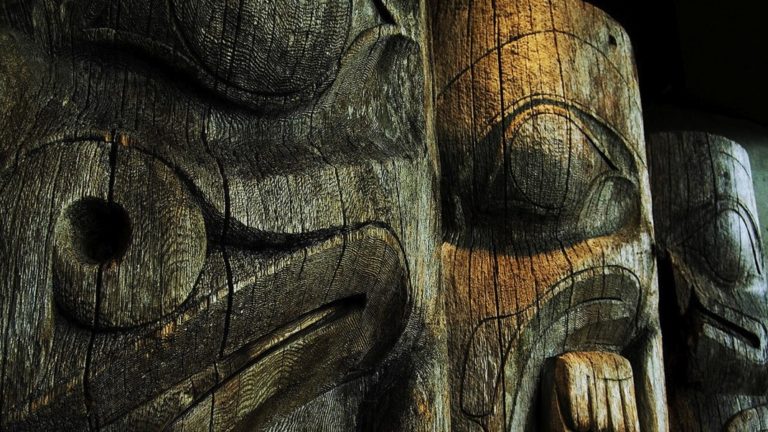
Crocodile came to me recently in ceremony. At first I was startled by his appearance, feeling I have already embraced every shadow aspect of myself he represents. Since his visit, however, I have spent time welcoming him and examining the teachings he now brings.
Crocodile/Snake holds our basal self, our deepest fears and lesser-evolved leanings which are held in the reptilian brain. In sacred ceremony and spiritual initiations, it is snake or crocodile who confronts you to face and embrace that which you fear most. His personal challenge to me: “You’re not a true shaman. You don’t work in the rain forest, you don’t ingest plant medicines, and you’re falsely holding your craft, thereby misleading those you serve.”
On more than one occasion I have been questioned and warned against calling myself a shaman. I haven’t studied in the jungle, I don’t have any hint of bronzed pigment in my Irish skin, and I don’t have a Maestro or don teaching me the ways. My path is unique in devoted past-life reclamation, shamanic journey, and an early proclamation at five-years-old that I would be a shaman. I was born ready and haven’t looked back. However, the thorny challenges still arise.
Enter the internal struggle of spirit and shadow. It’s brought me to a place of deep self-inquiry and an eventual and potent reclamation. It’s also offered me a new perspective on the path of the modern shaman.
What is a Shaman?
When asked, “What is a shaman?” my easiest answer is “someone who works in the invisible spaces to bring peace and healing to those whom they are in service.”
“Shamans are intermediaries or messengers between the human world and the spirit worlds. Shamans are said to treat ailments/illness by mending the soul. Alleviating traumas affecting the soul/spirit restores the physical body of the individual to balance and wholeness. The shaman also enters supernatural realms or dimensions to obtain solutions to problems afflicting the community. Shamans may visit other worlds/dimensions to bring guidance to misguided souls and to ameliorate illnesses of the human soul caused by foreign elements. The shaman operates primarily within the spiritual world, which in turn affects the human world. The restoration of balance results in the elimination of the ailment.”
Tryptamine Palace
In Cave and Cosmos, Michael Harner suggests it is simply “one who knows.”
Core and Indigenous Shamanism
The big divide in the shamanic communities lies between those who work in the rain forest with the lineage of indigenous wisdom in their blood; and so-called Plastic Shamans who have no connection to the cultures and traditions they represent.
As shamanism has gained prevalence in the modern era, “core shamanism” has become the accepted term for those who use the methods of the shaman but have not been raised in the traditional cultures. The Foundation for Shamanic Studies has reintroduced the shamanic journey for self-healing, while the Psychonauts have lead a revolution through chemically assisted self-inquiry. Both are valid paths that differ greatly from a jungle education. While the efficacy of the practice is all that should matter, there still lies a division.
Plant Medicine
Another crucial distinction for indigenous shamans is their relationships with the plants. Dietas are ceremonial ingestions of plant medicines that teach the shaman how to walk between and within the astral worlds. Any number of teacher plants are used, from tobacco to ayahuasca. These ceremonies are performed with great reverence and honor and remain within sacred guidelines as sincere spiritual endeavors to deepen the path of the seeker. The illusion of this world fades away and great insights are gained, revealing the true nature of one’s own soul.
Freakin’ awesome when done in this sacred space, right?
I, however, am a different kind of shaman. I traverse the dimensions without the use of hallucinogens. Drums, deep meditation, and the psychic connection with spirits and plant allies, for me, have been enough. And Croc challenged me on this also: “Is your plant abstinence genuinely enough to gain such an alliance with the spirit realms?”
In the modern world, our relationship to the plants is vastly different than that of the indigenous shaman. We don’t commune with them personally, nor do we seek to hone their wisdom. As a result, contemporary seekers often misuse the medicines. In my younger days, I experimented with mushrooms recreationally. I found them an expansive and uplifting dalliance that only affirmed my path as a seer and healer. Yet I took them with no noble intent.
Recently, I found myself called to work more closely with the plants in ceremonial space and felt conflicted. My ego holds my hallucinogenic refrain as a badge of honor — a way of ensuring the purity of the messages received. And yet I found myself deeply appreciating the plant spirits again, in great awe and gratitude for the teachings they shared.
And what they shared was this: I’ve connected more than sufficiently with the plant spirits. I learn and walk beside them every day to offer blessings to my community. I need not ingest them, for they have been my allies all along!
In a recent Aubrey Marcus podcast, Astral Snakes and Binaural Beats (episode 59), Cory Allen shared his most recent devotion is not in using the plant medicines, but rather simply being in the astral plane without any enhancements. Under the influence of the medicine, “The consciousness of the plant is with you in that space and colors your vision of that space. If you get there without it, you are completely you and you are on your own.” Boom, validation! And Croc began to smile.
What I realized was, it all comes back to me not having any allies, any perceptions, any filters on my experience in these worlds. The mark of the shaman is not who they are when they’re on the medicines or how they handle these energies inside of them. It is who they are in the absence of any aids at all!



